
Bridgwater is a historic market town and civil parish in Somerset, England. The town had a population of 41,276 at the 2021 Census. Bridgwater is at the edge of the Somerset Levels, in level and well-wooded country. The town lies along both sides of the River Parrett; it has been a major inland port and trading centre since the industrial revolution. Most of its industrial bases still stand today. Its larger neighbour, Taunton, is linked to Bridgwater via a canal, the M5 motorway and the GWR railway line.
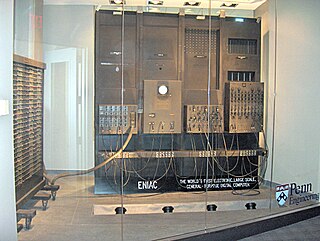
ENIAC was the first programmable, electronic, general-purpose digital computer, completed in 1945. Other computers had some of these features, but ENIAC was the first to have them all. It was Turing-complete and able to solve "a large class of numerical problems" through reprogramming.
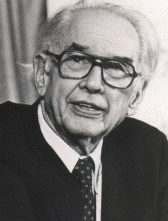
John Vincent Atanasoff,, was an American physicist and inventor credited with inventing the first electronic digital computer. Atanasoff invented the first electronic digital computer in the 1930s at Iowa State College. Challenges to his claim were resolved in 1973 when the Honeywell v. Sperry Rand lawsuit ruled that Atanasoff was the inventor of the computer. His special-purpose machine has come to be called the Atanasoff–Berry Computer.

North Petherton is a town and civil parish in Somerset, England, situated on the edge of the eastern foothills of the Quantocks, and close to the edge of the Somerset Levels. The town has a population of 6,730 as of 2014. The parish includes Hamp, Melcombe, Shearston, Woolmersdon and Huntworth.
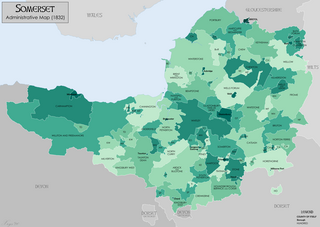
Somerset is a historic county in the south west of England. There is evidence of human occupation since prehistoric times with hand axes and flint points from the Palaeolithic and Mesolithic eras, and a range of burial mounds, hill forts and other artefacts dating from the Neolithic, Bronze and Iron Ages. The oldest dated human road work in Great Britain is the Sweet Track, constructed across the Somerset Levels with wooden planks in the 39th century BCE.
Clarks, the trade name of C. & J. Clark International Limited, is a British international shoe manufacturer and retailer majority owned by Viva Goods, Hong Kong. It was founded in 1825 by Cyrus Clark in the village of Street, Somerset, England, where the company's headquarters remain. The company has 1,400 branded stores and franchises around the world and also sells through third-party distribution. Clarks also operated concessions in Mothercare stores. Clarks had been owned by the Clark family and employees, but taken over via a £100 million investment by the Hong Kong-based private equity firm LionRock Capital, after which the Clarks family lost overall control of the company. In January 2021, Viva China Holdings agreed to acquire 51% of LionRock Capital, so has a substantial stake in the Clarks brand. Viva China was later renamed to be Viva Goods Co. Ltd.
Electronic literature or digital literature is a genre of literature where digital capabilities such as interactivity, multimodality or algorithmic text generation are used aesthetically. Works of electronic literature are usually intended to be read on digital devices, such as computers, tablets, and mobile phones. They cannot be easily printed, or cannot be printed at all, because elements crucial to the work cannot be carried over onto a printed version.
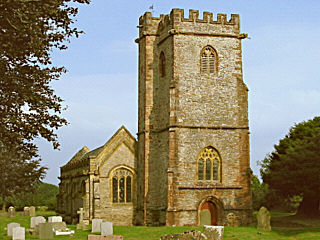
Broomfield is a village and civil parish in Somerset, England, situated about five miles north of Taunton. According to the 2011 census it had a population of 249.

Edge computing is a distributed computing model that brings computation and data storage closer to the sources of data, so that a user of a cloud application is likely to be physically closer to a server than if all servers were in one place. This is meant to make applications faster. More broadly, it refers to any design that pushes computation physically closer to a user, so as to reduce the latency compared to when an application runs on a single data centre. In the extreme case, this may simply refer to client-side computing.

Computational creativity is a multidisciplinary endeavour that is located at the intersection of the fields of artificial intelligence, cognitive psychology, philosophy, and the arts.
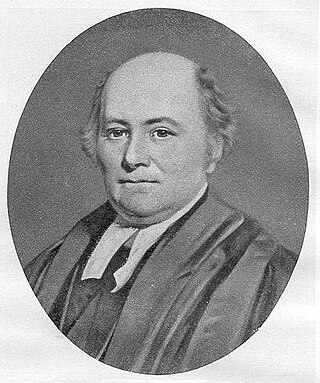
The Gaisford Prize is a prize in the University of Oxford, founded in 1855 in memory of Dr Thomas Gaisford (1779–1855). For most of its history, the prize was awarded for Classical Greek Verse and Prose. The prizes now include the Gaisford Essay Prize and the Gaisford Dissertation Prize.

The ParishChurch of St Mary, more commonly known as St Mary's, is the main Church of England parish church for the town of Bridgwater, Somerset. Originally founded well before the Norman Conquest, the present church is a large and imposing structure dating primarily from the 14th and 15th centuries, with both earlier remains and later additions.

The Shoe Museum in Street, Somerset, England exhibited shoes dating from the Roman era to the present day. The museum closed on 27 September 2019.

The Euphonia was a talking machine created in the early to mid-nineteenth century by the Austrian inventor Joseph Faber and exhibited in 1845 in Philadelphia and in 1846 in London's Egyptian Hall. An earlier version of the invention had been destroyed in 1844 by Faber.
An AI accelerator, deep learning processor, or neural processing unit (NPU) is a class of specialized hardware accelerator or computer system designed to accelerate artificial intelligence and machine learning applications, including artificial neural networks and machine vision. Typical applications include algorithms for robotics, Internet of Things, and other data-intensive or sensor-driven tasks. They are often manycore designs and generally focus on low-precision arithmetic, novel dataflow architectures or in-memory computing capability. As of 2024, a typical AI integrated circuit chip contains tens of billions of MOSFET transistors.

René Vidal is a Chilean electrical engineer and computer scientist who is known for his research in machine learning, computer vision, medical image computing, robotics, and control theory. He is the Herschel L. Seder Professor of the Johns Hopkins Department of Biomedical Engineering, and the founding director of the Mathematical Institute for Data Science (MINDS).
Human-AI collaboration is the study of how humans and artificial intelligence (AI) agents work together to accomplish a shared goal. AI systems can aid humans in everything from decision making tasks to art creation. Examples of collaboration include medical decision making aids., hate speech detection, and music generation. As AI systems are able to tackle more complex tasks, studies are exploring how different models and explanation techniques can improve human-AI collaboration.
John Clark (1785-1853) was a British printer and inventor who created the first automated text generator, the Latin Verse Machine between 1830 and 1843. Clark also patented a method for rubberising cloth that was used for air beds.
Generative literature is poetry or fiction that is automatically generated, often using computers. It is a genre of electronic literature, and also related to generative art.













